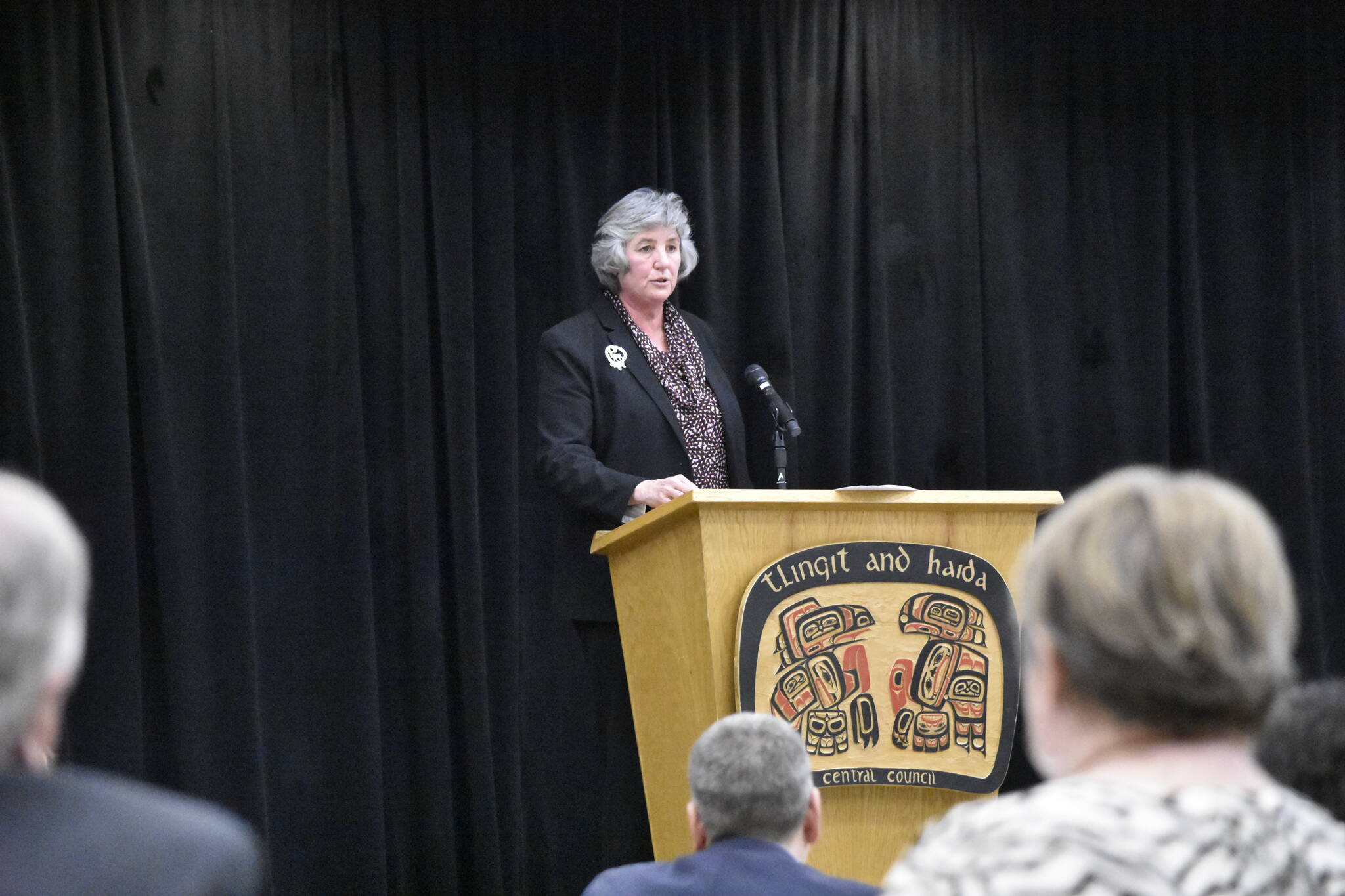University of Alaska President Pat Pitney delivered her State of the University address at the Juneau Chamber of Commerce Luncheon, emphasizing the benefits the university brings to the state’s workforce.
Pitney on Thursday told the chamber the UA system was ready to train Alaska’s workers at all levels, from work certifications to doctorate programs and the school was working to build enrollment. The system had slimmed down following state budget cuts and the COVID-19 pandemic, but had the support of the Alaska State Legislature and Gov. Mike Dunleavy.
“The support we are receiving from the governor and the Legislature are all signs we’re headed in the right direction,” Pitney said.
Pitney said jobs were increasingly demanding some kind of education or certification but that there was also a strong correlation between education and higher wages.
“As the U.S. was emerging from COVID the first time, the overall economy added in one month 916,000 jobs, Pitney said. “Only 7,000 went to workers with only a high school diploma.”
[Pitney: UA ready to train Alaska’s workforce]
The university was working to make programs affordable and accessible, Pitney said, and she asked the audience, which included lawmakers and business leaders, to support UA and encourage enrollment among all ages. With the bipartisan infrastructure bill and increased demand for domestic mining, Alaska will have a lot of jobs that need filling.
“We need every Alaskan of working age to take advantage of the jobs that are going to be coming here,” Pitney said.
The university was advocating for the establishment of the Higher Education Investment Fund, which in 2019 was folded into the state’s general fund and subject to yearly budget debates. A group of UA students recently lost a case challenging the Dunleavy administration’s decision to move the HEIF, but have appealed the ruling to the Alaska Supreme Court.
Pitney said Alaska has some of the lowest completion rates for federal Free Application for Federal Student Aid grants, which she said was Alaska’s biggest untapped resource. If Alaskans filled out the FASFA form at the average national rate, Pitney said, students would have $8 million more to pay for higher education.
In addition to sectors like resources and fisheries, the university was expanding its programs to include mariculture, finance and aerial drones.
Research has shown UA graduates are more likely to stay in the state, Pitney said, and the university was the key to growing an Alaskan workforce.
• Contact reporter Peter Segall at psegall@juneauempire.com. Follow him on Twitter at @SegallJnuEmpire.

